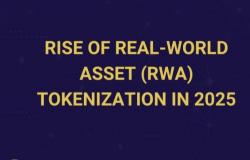Introduction
Decentralized Finance (DeFi) has emerged as one of blockchain's most disruptive applications, creating financial services without traditional intermediaries like banks, brokerages, or exchanges. In 2025, DeFi protocols manage $142 billion in Total Value Locked (TVL), demonstrating mainstream adoption of peer-to-peer financial infrastructure that operates 24/7 without geographic restrictions or permission requirements.
What is DeFi?
DeFi refers to financial applications built on blockchain networks (primarily Ethereum) that use smart contracts to replicate traditional financial services without centralized intermediaries. Users interact directly with protocols through cryptocurrency wallets, maintaining custody of their assets while accessing lending, borrowing, trading, yield generation, and asset management services. DeFi eliminates gatekeepers, reduces costs, and enables permissionless access to financial tools previously reserved for accredited investors or banking customers.

Core DeFi Services
Lending and Borrowing: Platforms like Aave and Compound enable users to lend cryptocurrency for interest or borrow against collateral without credit checks or approval processes. Lenders earn yields of 2-12% APY, while borrowers access capital without selling holdings.
Decentralized Exchanges (DEXs): Uniswap, PancakeSwap, and Curve allow peer-to-peer token swaps without centralized exchange custody. Automated Market Makers (AMMs) replace order books with liquidity pools, enabling 24/7 trading with no KYC requirements.
Stablecoins: USD-pegged cryptocurrencies like USDC, DAI, and USDT provide price stability for DeFi transactions, enabling predictable returns and dollar-denominated contracts without volatility.
Yield Farming: Users provide liquidity to protocols in exchange for trading fees and governance token rewards, earning 5-30% APY depending on risk and platform.
Derivatives and Options: Protocols like dYdX and GMX enable leveraged trading, perpetual futures, and options contracts without intermediaries or geographic restrictions.
Benefits of DeFi
DeFi eliminates intermediary fees, reducing transaction costs by 60-90%. Services operate 24/7 with no business hours or maintenance windows. Anyone with internet access can participate regardless of geography, credit score, or net worth. All transactions are transparent and verifiable on-chain. Users maintain self-custody, eliminating counterparty risks from centralized institutions. Smart contracts execute automatically without human intervention, reducing delays and errors.
Risks and Challenges
Smart contract vulnerabilities have led to hundreds of millions in losses from exploits. Regulatory uncertainty creates compliance challenges as governments develop DeFi frameworks. Impermanent loss affects liquidity providers when token prices diverge. High gas fees on Ethereum L1 make small transactions uneconomical (though L2 solutions address this). User experience complexity deters mainstream adoption—losing private keys means permanent asset loss with no recovery mechanism.
DeFi Statistics 2025
Total Value Locked reached $142 billion in October 2025. Daily DEX volume averages $8.2 billion across all chains. Ethereum hosts 62% of DeFi TVL, with Solana (12%), BNB Chain (8%), and Arbitrum (7%) as major alternatives. Over 4.8 million active DeFi users interact with protocols monthly. Lending protocols have facilitated $280 billion in cumulative loans since inception.
The Future of DeFi
DeFi is evolving toward institutional adoption with regulatory-compliant protocols, improved user interfaces hiding technical complexity, and cross-chain interoperability enabling seamless multi-network transactions. Real-world asset tokenization brings traditional securities onto DeFi rails. As technology matures and regulations clarify, DeFi will increasingly challenge traditional finance, offering superior efficiency, transparency, and accessibility to global users.
Conclusion
Decentralized Finance represents a fundamental reimagining of how financial services operate, replacing centralized intermediaries with transparent, permissionless protocols. While risks and challenges remain, DeFi's rapid growth demonstrates strong demand for financial infrastructure that prioritizes user control, transparency, and accessibility. As the ecosystem matures, DeFi will continue integrating with traditional finance, creating hybrid systems combining blockchain efficiency with regulatory compliance and user protection.






